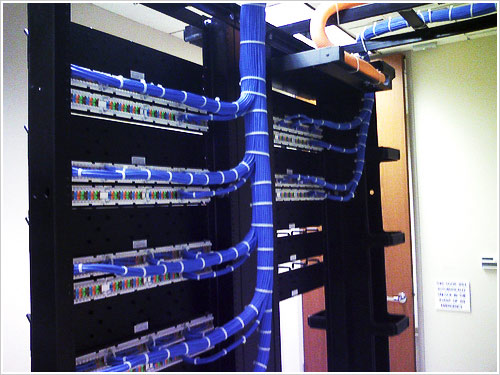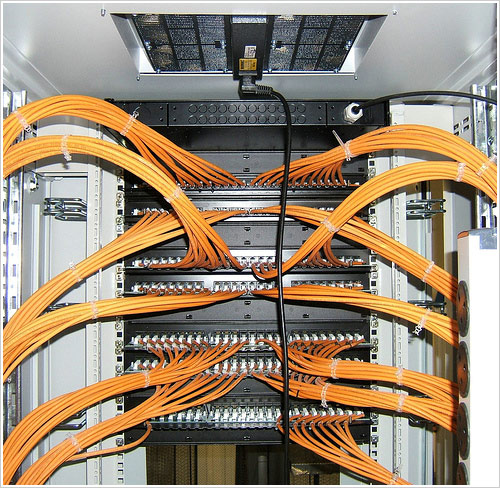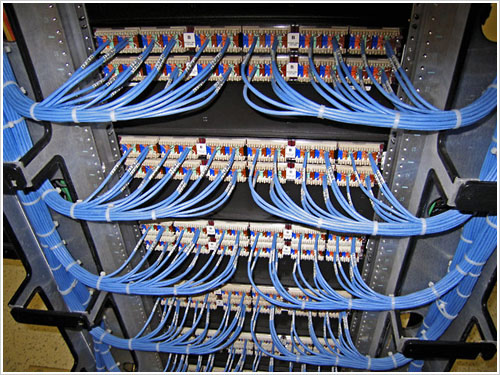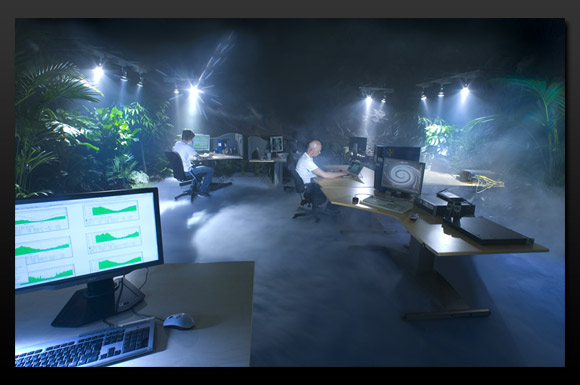Hi All
we gonna talk about Bug in oracle 10.2.0.4 , 10.2.0.5 since its unable to start enterprise manager after run
“emctl start dbconsole”
CONFIG: Oracle Enterprise Manager 10g Database Control Release 10.2.0.4.0
Copyright (c) 1996, 2007 Oracle Corporation. All rights reserved.
https://myhost:5501/em/console/aboutApplication
Starting Oracle Enterprise Manager 10g Database Control
................................................ failed
This error appear because the SSL certification has been end .
But the question is what can i do ?
Forget Enterprise manager and start using command line
Not just kidding
What if we try to recreate it again ?
emca -config dbcontrol db -repos recreate
STARTED EMCA at Jan 11, 2011 4:11:01 PM
EM Configuration Assistant, Version 10.2.0.1.0 Production
Copyright (c) 2003, 2005, Oracle. All rights reserved.
Enter the following information:
Database unique name: catest
Database Control is already configured for the database catest
You have chosen to configure Database Control for managing the database catest
This will remove the existing configuration and the default settings and perform a fresh configuration
Do you wish to continue? [yes(Y)/no(N)]: Y
Listener port number: 1521
Cluster name: mycluster
Password for SYS user:
Password for DBSNMP user:
Password for SYSMAN user:
Email address for notifications (optional):
Outgoing Mail (SMTP) server for notifications (optional):
........
Jan 11, 2011 4:18:05 PM oracle.sysman.emcp.util.DBControlUtil secureDBConsole
INFO: Securing Database Control (this may take a while) ...
Jan 11, 2011 4:19:31 PM oracle.sysman.emcp.util.DBControlUtil startOMS
INFO: Starting Database Control (this may take a while) ...
Jan 11, 2011 4:28:38 PM oracle.sysman.emcp.EMConfig perform
SEVERE: Error starting Database Control
Refer to the log file at /myhost/oracle/product/10.2.0/db_1/cfgtoollogs/emca/catest/emca_2011-01-11_
04-11-01-PM.log for more details.
Could not complete the configuration. Refer to the log file at /myhost/oracle/product/10.2.0/db_
1/cfgtoollogs/emca/catest/emca_2011-01-11_04-11-01-PM.log for more details.
So what can i do in this case ? i try to recreate what more i can do ?
./emctl status dbconsole
Oracle Enterprise Manager 10g Database Control Release 10.2.0.1.0
Copyright (c) 1996, 2005 Oracle Corporation. All rights reserved.
https://myhost:1158/em/console/aboutApplication
Oracle Enterprise Manager 10g is not running.
./emctl status agent
Oracle Enterprise Manager 10g Database Control Release 10.2.0.1.0
Copyright (c) 1996, 2005 Oracle Corporation. All rights reserved.
---------------------------------------------------------------
Agent is Not Running
Refer to Oracle Metlink Doc [1222603.1]
we need to do the following :
1- Ignore any errors and continue with the installation or upgrade. The database will be created without errors.
2- Apply Patch 8350262 to your Oracle Home installation using OPatch
To apply the patch :
A-change to Patch directory .
B-export ORACLE_SID = ORCL
C-export ORACLE_HOME= /u01/oracle/product/10.2.0/db_1/
D-$ORACLE_HOME/OPatch/Opatch apply
Invoking OPatch 10.2.0.4.2
Oracle Interim Patch Installer version 10.2.0.4.2
Copyright (c) 2007, Oracle Corporation. All rights reserved.
Oracle Home : /myhost
Central Inventory : /scratch/pchebrol/oraInventory
from : /etc/oraInst.loc
OPatch version : 10.2.0.4.2
OUI version : 10.2.0.4.0
OUI location : /myhost/oui
Log file location : /myhost/cfgtoollogs/opatch/opatch2011-01-02_11-00-00AM.log
ApplySession applying interim patch '8350262' to OH '/myhost'
Running prerequisite checks...
OPatch detected non-cluster Oracle Home from the inventory and will patch the local system only.
Backing up files and inventory (not for auto-rollback) for the Oracle Home
Backing up files affected by the patch '8350262' for restore. This might take a while...
Backing up files affected by the patch '8350262' for rollback. This might take a while...
Patching component oracle.sysman.agent.core, 10.2.0.4.0a...
Updating jar file "/myhost/sysman/jlib/emCORE.jar" with
"/sysman/jlib/emCORE.jar/oracle/sysman/eml/sec/fsc/FSWalletUtil.class"
Updating jar file "/myhost/sysman/jlib/emCORE.jar" with
"/sysman/jlib/emCORE.jar/oracle/sysman/eml/sec/rep/RepWalletUtil.class"
Updating jar file "/myhost/sysman/jlib/emCORE.jar" with
"/sysman/jlib/emCORE.jar/oracle/sysman/eml/sec/util/RootCert.class"
Updating jar file "/myhost/sysman/jlib/emCORE.jar" with
"/sysman/jlib/emCORE.jar/oracle/sysman/eml/sec/util/SecConstants.class"
Updating jar file "/myhost/sysman/jlib/emd_java.jar" with "/sysman/jlib/emd_
java.jar/oracle/sysman/eml/sec/fsc/FSWalletUtil.class"
Updating jar file "/myhost/sysman/jlib/emd_java.jar" with "/sysman/jlib/emd_
java.jar/oracle/sysman/eml/sec/rep/RepWalletUtil.class"
Updating jar file "/myhost/sysman/jlib/emd_java.jar" with "/sysman/jlib/emd_
java.jar/oracle/sysman/eml/sec/util/RootCert.class"
Updating jar file "/myhost/sysman/jlib/emd_java.jar" with "/sysman/jlib/emd_
java.jar/oracle/sysman/eml/sec/util/SecConstants.class"
ApplySession adding interim patch '8350262' to inventory
Verifying the update...
Inventory check OK: Patch ID 8350262 is registered in Oracle Home inventory with proper meta-data.
Files check OK: Files from Patch ID 8350262 are present in Oracle Home.
OPatch succeeded.
3-If you using linux you need to kill all dbconsole process by “KillDbconsole” you will find it in the same patch directory
$ /killDBConsole
ORACLE_HOME=/myhost/db_1
ORACLE_SID=caem31
State directory = /myhost/db_1/staxd10_caem31
WatchDog PID = 802932
DBconsole PID = 577716
EMAgent PID = 512156
Killing WatchDog (pid=802932) ...
Successfully killed process 802932
Killing DBConsole (pid=577716) ...
Successfully killed process 577716
Killing EMAgent (pid=512156) ...
Successfully killed process 512156
4-This not optional steps you need to do it :
./emctl secure dbconsole -reset
Oracle Enterprise Manager 10g Database Control Release 10.2.0.4.0
Copyright (c) 1996, 2007 Oracle Corporation. All rights reserved.
https://myhost:5501/em/console/aboutApplication
Enter Enterprise Manager Root Password :
DBCONSOLE already stopped... Done.
Agent is already stopped... Done.
Securing dbconsole... Started.
Checking Repository... Done.
Checking Em Key... Done.
Checking Repository for an existing Enterprise Manager Root Key...
WARNING! An Enterprise Manager Root Key already exists in
the Repository. This operation will replace your Enterprise
Manager Root Key.
All existing Agents that use HTTPS will need to be
reconfigured if you proceed. Do you wish to continue and
overwrite your Root Key
(Y/N) ?
Y
Are you sure ? Reset of the Enterprise Manager Root Key
will mean that you will need to reconfigure each Agent
that is associated with this OMS before they will be
able to upload any data to it. Monitoring of Targets
associated with these Agents will be unavailable until
after they are reconfigured.
(Y/N) ?
Y
Generating Enterprise Manager Root Key (this takes a minute)... Done.Fetching Root Certificate from
the Repository... Done.
Updating HTTPS port in emoms.properties file... Done.
Generating Java Keystore... Done.
Securing OMS ... Done.
Generating Oracle Wallet Password for Agent.... Done.
Generating wallet for Agent ... Done.
Copying the wallet for agent use... Done.
Storing agent key in repository... Done.
Storing agent key for agent ... Done.
Configuring Agent...
Configuring Agent for HTTPS in DBCONSOLE mode... Done.
EMD_URL set in /myhost/myhost/sysman/config/emd.properties
Done.
Configuring Key store.. Done.
Securing dbconsole... Sucessful.
Sometimes reset secure its not enough the same error will be appear , I know its lot of steps but i told you use command line Ok Ok what i can do just recreate enterprise manager again :
emca -config dbcontrol db -repos recreate
Ok are you sure its working ??!!
emctl status dbconsole
Oracle Enterprise Manager 10g Database Control Release 10.2.0.4.0
Copyright (c) 1996, 2007 Oracle Corporation. All rights reserved.
https://localhost:1158/em/console/aboutApplication
Oracle Enterprise Manager 10g is running.
——————————————————————
Logs are generated in directory N:\oracle\product\10.2.0\db/klpdbscph601.klpcph.local_KLPSTAGE01/sys
man/log
Thank you all
hope this topic will be useful .









